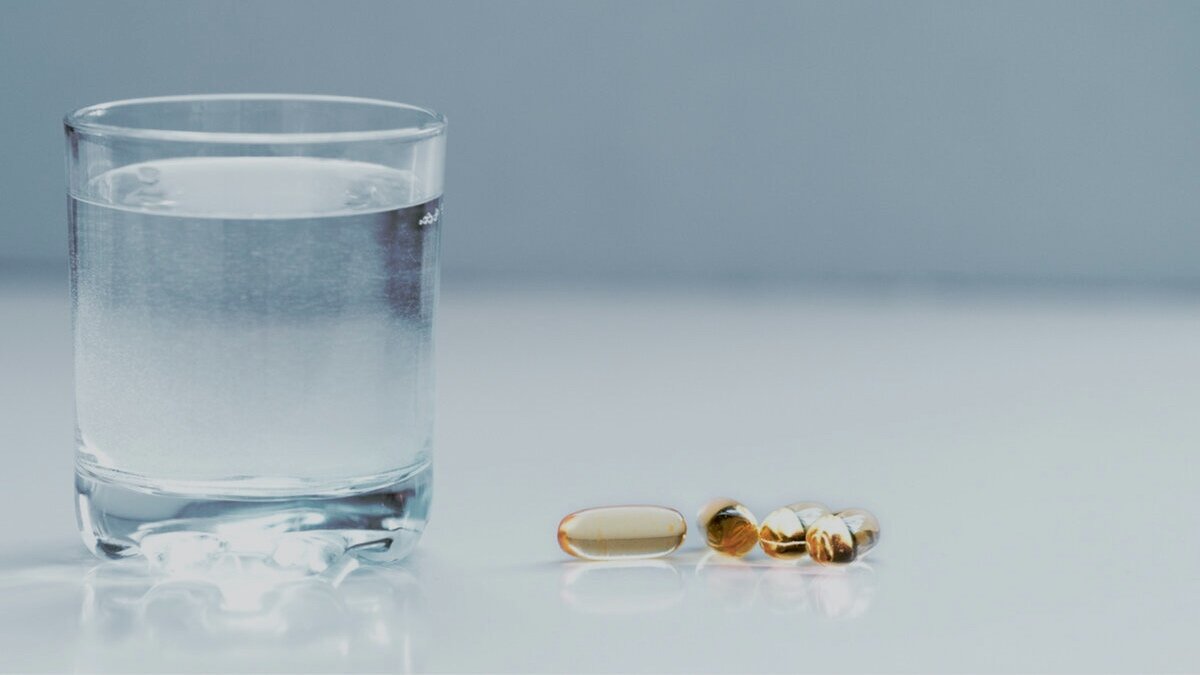What You Need to Know About OAB Medications
How is taking medication for OAB different than with other medical issues?
Overactive Bladder (OAB) is very different from many of the problems that are treated in medicine such as diabetes, asthma or high blood pressure. OAB is not a disease but is a collection of symptoms. This isn’t said to diminish the profound and often devastating impact of OAB on many people. But it does mean that, unlike many other diseases, the target of treatment is not the disease, it is the symptoms. We don’t have a “cure” for OAB, instead we have effective treatments for its symptoms. So, what really matters in treating OAB, more than in many other diseases, is how bothersome the symptoms are to the patient and how they respond to treatment. Ultimately, only the patient gets to decide whether their symptoms are improved enough with therapy.
Do I have to take a medication for Overactive Bladder?
Overactive Bladder (OAB) is not directly life-threatening. So, whether you are treated with behavioral therapies, medications or even no treatment at all, is mostly up to you and how bothered you are by your symptoms. Overactive bladder can affect patients who may be older or have other medical problems such as high blood pressure, diabetes or memory loss. OAB can make these problems harder to deal with and this may be a good reason to take a medication to help with the bladder symptoms. However, OAB medication side effects can also be more of a problem for older patients or those with other medical issues. Both the benefits and the risks of taking an OAB medication need to be considered before starting therapy. Some patients may have relatively mild OAB symptoms. These patients may feel that the time, effort and even side effects of a medication, even if mild, simply do not outweigh the small bother they have with their bladder symptoms. It is never wrong to see how much you can improve with behavioral therapies before trying an OAB medication.
What side effects can I anticipate with OAB medications?
There are quite a few medications that can be taken to control symptoms of Overactive Bladder. Common brand names include Ditropan, Detrol, VESIcare, Toviaz, Sanctura, Myrbetriq and Enablex. There is an over-the-counter patch, Oxytrol for Women as well as a prescription gel, Gelnique, that are applied to the skin instead of taken by mouth. Most Overactive Bladder (OAB) medications work by blocking certain nerve endings (receptors) in the bladder and are called antimuscarinics. Unfortunately, the receptors targeted by these medications are located not just in the bladder but also in the mouth, eyes, intestines and brain. This helps to explain common side effects including dry mouth, dry eyes, constipation, blurred vision, and impaired thinking or memory. Because the medication is acting directly on the bladder, difficulty urinating and even urinary retention is also possible (though rare).
Dry mouth is the most common side effect and can occur in 20% to as high as 60% of patients, depending on the medication. Medications which act over a longer time (called extended release) usually cause lower rates of all side effects, including dry mouth. Constipation is common as well, but much less likely than dry mouth. Between 7% and 17% of patients across multiple drug trials reported constipation with OAB medication (though it’s important to remember constipation was also relatively common in patients not taking the medication). There is some indication that the rates of these side effects may decrease in medications that were developed more recently. But the “newer” medications may also be more expensive for many patients (last new medication for OAB in the US was introduced in 2012).
In 2012, a new class of Overactive Bladder medication was brought to the United States. This medication Myrbetriq (mirabegron) is not an antimuscarinic like previous OAB drugs. Instead of blocking a receptor in the bladder, it stimulates a different type of bladder receptor which tends to relax the bladder. Myrberiq has not been shown to be more effective than the older medications, but it is not associated with the side effects of dry mouth, dry eyes, constipation or memory impairment seen with the antimuscarinics. This may be useful in some patients, especially those that stopped an OAB medication due to those side effects. There are concerns that Myrbetriq can raise blood pressure so this is generally followed more closely in patients on Myrbetriq.
Can I start both medications and behavioral therapies for Overactive Bladder at the same time?
There are many advantages to behavioral therapies for treating Overactive Bladder, which in several studies have been shown to be equally as effective as medications. Behavioral therapies can be easily adjusted to various types of patients, have few if any side effects, and carry no real risk to patients. They are considered “first-line” therapies for OAB for very good reason and should be offered to any patient who is able to act on them.
However, many patients have relatively severe symptoms and there are indications that combining both medications and behavioral therapies from the beginning can have advantages. There is no evidence that beginning medications earlier in the process is harmful. However, it is extremely important to remember that when starting medications for OAB, behavioral therapies should not be forgotten. Numerous studies suggest that every OAB therapy such as medications or Botox injections or neuromodulation is more effective if combined with an effort at behavioral changes and therapies. I find it extremely useful in my bladder health practice to circle back and remind patients of timed voiding, pelvic floor exercises and reduction of bladder irritants, even after they have started a new OAB medication.
Which is the BEST medication for my Overactive Bladder symptoms?
So, this is the most common question that I get from patients and other doctors alike. It is also one of the more difficult to answer. First, there are very few studies in which medications are compared directly to each other to see if one drug actually works better than another. But, even when those comparisons have been made, there have not been any real differences seen in how effective these medications are at controlling how frequently or urgently people urinate or how often they leak urine.
Medication Side Effects
There are differences in side effects, however. The oldest medications (which have been around longer than I have been a doctor) are associated with higher rates of dry mouth, dry eyes and memory/thinking effects. There may even be an association between long-term use and dementia. But many patients taking even these oldest medications do not have any of these side effects. And the older medications can be cheaper on many insurance drug formularies.
There are also good reasons to take a medication that is released more slowly (extended release) rather than one released quickly (immediate release). Dry mouth and constipation are much less frequent with the longer-acting drug formulations. Also, patients are more likely to take a drug as prescribed if it is taken once-daily instead of with multiple doses.
Patient Issues
Particular patients may have a specific reason not to take a certain type of OAB medication. Patients with a type of glaucoma called narrow-angle glaucoma are at higher risk and should mostly avoid antimuscarinics unless approved by their eye doctor. Patients with existing memory impairment or dementia may want to avoid some of the OAB medications, particularly the oldest drugs, or may want to only take OAB medications that are less likely to affect the brain. Trospium, for example, has a more difficult time crossing from the blood to the brain and mirabegron is not thought to have an impact on brain function. Patients who already have issues with constipation, dry eyes or dry mouth, or who have had these side effects with previous OAB drugs may also want to use medications with lower rates of those side effects. Patients with a history of not emptying their bladder (urinary retention) may want to avoid OAB medications altogether.
The honest answer? For many of my patients, the “BEST” OAB medication is often the one that is best covered on their insurance formulary and is the most affordable. You can’t take a medication that you can’t afford and any drug is not going to be very effective sitting at the pharmacy.
Should I stop my Overactive Bladder medication if I have side effects?
For some patients (but not many), side effects of Overactive Bladder (OAB) drugs can be severe enough to require immediately stopping the medication. This is more common in patients who already have an underlying issue such as constipation or memory impairment which becomes suddenly worse after starting the new treatment. But for most people who have side effects with OAB medications, these are mild and can often be managed without stopping the medication. The key is to anticipate that these effects may occur and have a strategy ready if they happen.
Dry mouth is a common, though often mild, side effect with antimuscrinic medications for OAB. It can, ironically, prompt patients to drink more fluids - not usually welcome in a patient who already has urinary frequency! Instead of stopping the medication, try to use oral washes with glycerin, avoid alcoholic mouthwashes, carry sugar-free candies or limit to frequent, small sips of water.
Constipation is less frequently encountered but can also occur with OAB medications. If not severe, changes including increased dietary fiber or supplements which contain extra fiber may help. I have had many patients report they were helped by a “power-pudding” recipe, which I have recommended for 15 years. Regular exercise may also help to relieve constipation. These strategies can be employed in someone with a history of constipation who wants to prevent a recurrence when taking an OAB medication. Knowing the side effects of these medications and developing a plan, ahead of time, should they occur, can mean the difference between successful OAB therapy and failure.
How long should it be before I see results with a medication?
The time before you should expect to see improvement can depend on the medication you are taking. We often talk about the terminal elimination half life (almost always just called the t 1/2) of a medication.. This is a measure of how long it takes half of the medication to be eliminated from your body. The t 1/2 is important because it tells you how long until the drug reaches a level dose (steady state) in the body that you need for effective treatment. It takes about 5 times the t 1/2 for a drug to reach this steady level.
For quick-acting oxybutynin, the t 1/2 is 2-3 hours, meaning the medication has reached its treatment dose after about 10-15 hours. We would expect to begin seeing some improvement by that time. However, another common OAB medication, Myrbetriq, has a t 1/2 that is nearly 50 hours. So, it will take over 10 days before the medication levels reach the steady, therapy dosage. You can look up the t 1/2 of your medication on this table I created.
It can get a little more complicated because multiple studies on OAB drugs show that patients continue to see increasing benefits for weeks after the medication reaches the steady state. Therefore, an OAB medication should generally be given 4-8 weeks to work before considered a failure, unless severe side effects force it to be stopped.
What can I do if I have not improved with multiple medications for OAB?
Many patients will do very well with a combination of behavioral therapies and medication for treatment of their frequent, urgent urination or urgency incontinence. This course of therapy is more likely to be successful if a patient combines behavioral therapies and medications while receiving help with any side effects that may occur. However, not every patient will respond. It is generally advisable to try more than one medication and more than one dose if possible because patients may have different responses to different OAB medications.. But with each new medication, the likelihood of a response probably decreases and it can be very frustrating for patients who are simply prescribed one medication after another month-after-month or even year-after-year without seeing satisfactory improvement. Patients are said to have refractory Overactive Bladder when they have not seen a satisfactory response to multiple medications taken adequately (4-8 weeks). This can also apply to patients who cannot take medications due to side effects or other medical issues. These refractory patients should see someone who specializes bladder health, such as a urologist sub-specialty certified in Female Pelvic Medicine (FPMRS). This also applies to men with Overactive Bladder (ignore the Female part of that title, guys). Why? First, because a specialist in bladder health can perform a more thorough evaluation to be sure that OAB is actually the cause of the bothersome bladder symptoms. It can take years of experience in this area to know what else to look for to be sure that it isn’t something other than Overactive Bladder (see Bladder Warning Signs). Perhaps as critical, a specialist can offer additional therapies, beyond first and second-line therapies. Third-line or advanced therapies for Overactive Bladder can be very effective even in patients who have seen no real response to multiple prior medications and behavioral therapies. One final note: Refractory OAB patients are a very special group to me. I have spent the last 15 years listening so sorrowfully to how long this group often must suffer before getting an effective therapy for them. Those stories are the reason I focused my career on incontinence and are largely the audience for this website. If you are or know someone with refractory Overactive Bladder, please take some hope from all that you read here.
Explore Our Guides to Overactive Bladder Treatments
Behavioral Therapies
Treatment for urinary incontinence can begin at home. Learn simple, effective techniques for treating Overactive Bladder that you can practice at home. Also find out when it is important to see a doctor for your bladder symptoms.
Medications for OAB
A complete guide to taking medications to help with Overactive Bladder including when to take an OAB medication, what side effects you may encounter and how to decide which medication might be right for you.
Advanced Therapies
Not everyone improves with OAB medications. I answer common questions about advanced therapies for Overactive Bladder including sacral neuromodulation, bladder Botox, and posterior tibial neuromodulation. Learn about all of your options when other treatments have failed.







